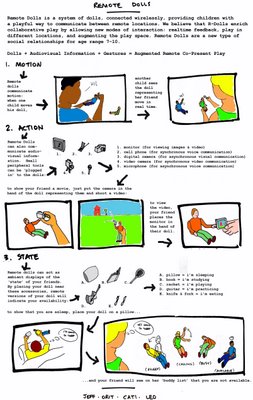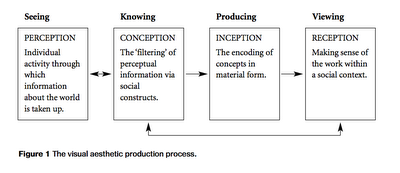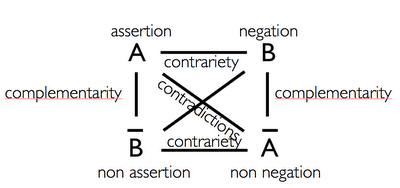If you’re new here, you may want to subscribe to my RSS feed to receive the latest Architectradure’s articles in your reader or via email. Thanks for visiting!

Moving Pictures
Recently, Kimberly Smith contacted me to discuss my work on Textable Movie. Textable Movie allows, by improvising movie-stories created from a personal video database and by suddenly being projected into someone else’s video database during the same story, to be surprised during the visualization of video elements corresponding to a story that correspond to someone else. I later introduced him the different stages of design from Textable Movie, Moving Pictures and Terraria. Review on these projects.
I originally created a methodology for international workshops on creative media making and sharing. My workshop is designed to engage teenagers from around the world in digital media making using the “textable movie” tool set. The workshop features a design cycle that begins with concept development and continues onto storyboarding, video production and editing; as it is realized, participants test and evaluate their video-stories using Textable Movie. Textable Movie is a graphical interface that takes text as input and allows users to improvise a movie in real-time based on the content of what they are writing. More about my workshop
The workshops global strategy focuses on fostering intercultural visual communication and play. One goal of the international program is to generate a cross-cultural study focused on the creative construction of media by teenagers.
Kimberly and I talked about the art of motion pictures being a language in itself.
For the past fifteen years, he has been passionately involved in using improvisation as a method for sharing what has been discovered about the language of motion pictures. His main concern is finding ways to emphasize the human element and de industrialize the process. He works with diverse groups of people ranging from severely disabled to experienced filmmakers.
All of his thinking tends to revolve around the idea of empowering people to acquire eloquence and skill with visual language and to be able to take control of the frame and thus the audience’s attention. Responsibility for community and each other can be learned through this creative process. So it is more about social renewal and human development as it is about making movies, dixit Kimberly.
Kimberly sent me some samples of group movie making activities. All of these games use the same guide lines -or rules- found here.
I had integrated a few of these ideas in my international workshops with Textable Movie, but some of them are inspiring and new to me.
Ping Pong The idea is to move the audience’s eye from left to right on the screen. This can be done a number of ways. dialogue is the easiest. Simply jump cut from one actor to the next and frame accordingly. Or pan from left to right. Or get the performers to move from left to right in the frame. Now the challenge is how do we smoothly accomplish this in a group where each individual gets a turn with the camera? We need common movie making language. In this case, each time a person hands off the camera, they have to tell the next person which side of the frame the visual focus was on. Thus the continuity is maintained. People learn very quickly when it is not. This game requires alertness almost the same way as something like Zip Zap Zop does. It can be timed or not. I’ve even had two teams compete.
In The Moment The idea is to emulate a fast paced current event news show. I did this one with the Irondale Ensemble in Halifax. We had a couple of cars so we were able to go to various locations across the city and stage “Live” interviews with group members posing as ordinary citizens. We payed attention to our framing (either left or right) and we shared the camera round robin. All edit-in-camera. Everyone had to pay close attention all the time and try to remember what had happened in the previous location as well as keep on top of the framing. The energy level was quite high. Our finished movie looked like a real live news show.
First Shot, Last Shot This game is built upon the idea that each individual shot contains an action that moves a story forward. So the first thing I do is have all the individuals in the group write down on little scraps of paper single shot ideas. For example: “angrily throwing a wad of paper in a trash can” or “biting a delicious apple or a bad one”. I encourage the group to save these shot ideas on little scraps of paper that can be kept in a box or a hat. These can be used in a variety of games, but in this one, we break into two teams. Each one picks a first shot out of the hat -then a last shot. the object of the game is to create a story sequence that gets from the first shot to the last shot in twelve shots. The camera is passed from individual to individual. No one is allowed more than one shot at a time and each shot has to be no longer than thirty seconds. All members of the team must appear in front of the camera at least once. Again this is all done edit-in-camera. So everyone has to be on their toes at all times. The game can be timed or not and the sequence can have more than twelve shots or less. We’ve done this as an easy going, inclusive recreational activity on a Saturday afternoon and the movie was played after a pot luck supper.
Power Shift This game is challenging for performers and shooters because it requires strategic freezing of the action without losing the flow of the movie. Other games do this too, but this one emphasizes the problem. This requires a group of five or more. Three or more people must be on camera at all times. The idea is to have a spontaneous feeling, dynamic group discussion or argument where individuals come and go because they have been bullied out or are pulling a power trip. The point of focus with the camera is to be aware of the axis at all times. So when a person hands the camera to the next person they can pass the information along and maintain directional continuity. This is an advanced game and again it can be done like a team sport with two groups competing within time parameters or limited numbers of shots.
Beam Us Up This game requires a tripod. The idea is to use “lock-off” camera positions to create Star Trek like transporter special effects. The dramatic point is something is wrong with the transporter – some people disappear and new ones emerge. Again the camera is shared round robin. So this is what changes up the personnel, but the real challenge is trying to remember how people were positioned in the last location so when they re emerge, they are still in the same physical relationship with each other. Its harder than people think, but kids of all ages love this game. The way it works is the camera is rock solidly framed wide on a certain empty location and you record a few seconds. Then you bring the group in and have them freeze in transporter position. Simply roll the camera again without moving it a millimetre and the group will appear out of nowhere. Some cameras have an overlap dissolve which makes the group seem to fade in. Its fun and the dramatic possibilities are wide open. This idea can be combined with other games like “In The Moment” to create wild, Wellsian stories.
Who Am I? This is a P.O.V. game. Again it is edit-in-camera and passed round robin from individual to individual in the group. Camera operators choose a certain P.O.V. either dynamic or static and the actors interact with the camera in such a way that the identity of the camera is implied, but not expressly given away. I usually remind the players not to hog the camera and figure out how to create connecting shots so the camera can be passed to the next player. All the visual rules remain the same. This game is played in teams. One group has to watch the other’s sequence and correctly identify the camera’s character.
I found very interesting his approach, developed from Viola Spolin’s Theatre Games.
All of them are designed with specific points of focus and they also accelerate the process of learning the language of motion pictures. But more importantly than all of this is the breaking down of the industrial hierarchy. My main goal is to foster inclusiveness, community pride and creativity.
For a researcher in HCI, who designs new tools and technology to allow improvisation, collaboration and creativity, it is very exciting to hear what video makers & educators invest and develop from a day to day basis on these subjects.


















